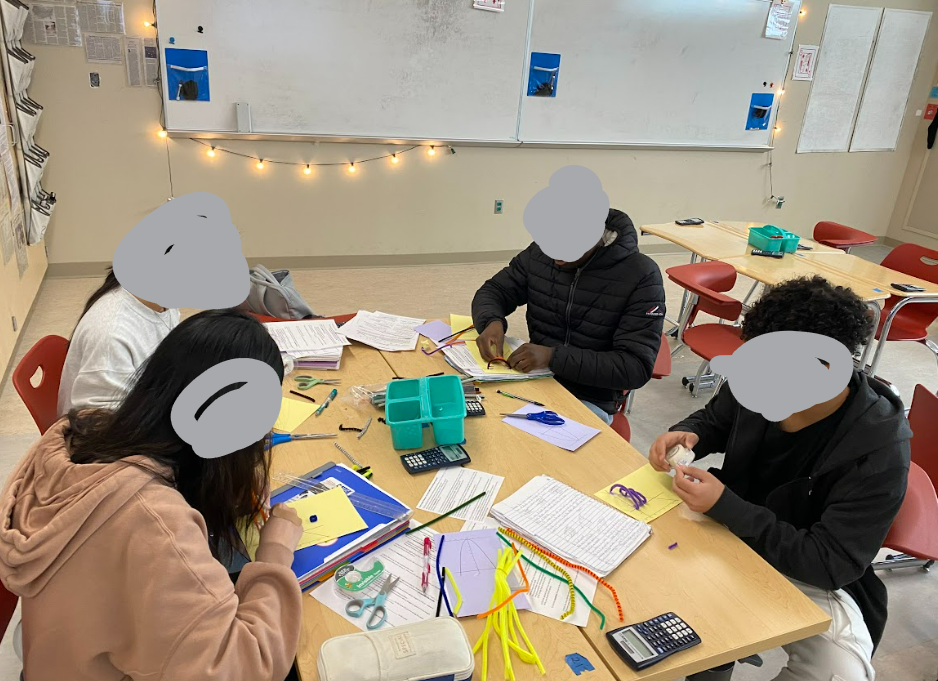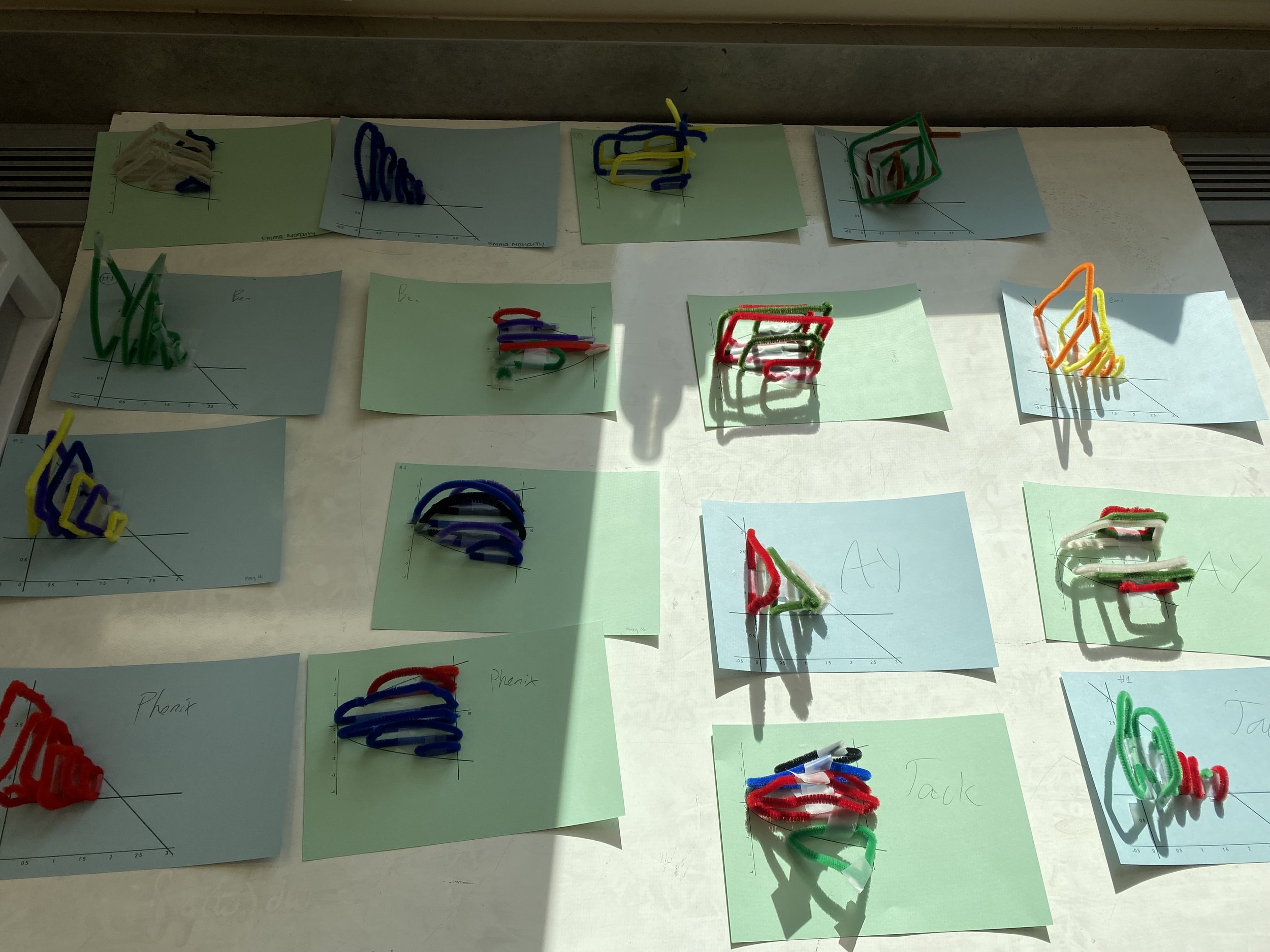Building Cross-Sectional Volumes
After spending several days on Volumes of Revolution, we began working on Volumes by Cross-Section this week. As always, Calculus in Motion is a great tool that I always use in my videos and during class to show students a representation of the volume they are calculating.
THIS Desmos activity is also helpful for students to use since they can control the slider themselves and revisit it at a later time.
However, I find that these aren’t quite enough to help students really see what is going on. I have tried other various visualization tools in the past, including Play-Doh, but I found that was just messy and a bit too distracting. I also made the mistake of trying to use plastic knives to cut the Play-Doh cross-sections - this was before I read about the dental floss trick.
Last year, I tried using pipe cleaners to build the volumes, and I loved it. It was enough of a building project that it fully captured their attention and helped them visualize the 3D volume and clearly see the edge lengths of the shapes on the base. At the same time, it wasn’t too messy and was easy to set-up for them before the came into the room. To keep the final projects sturdy, it helps to copy the bases onto cardstock paper.
The goal is to make something like this:
I gave them two different volumes to build, each on its own base. One had areas that were perpendicular to the x-axis and the other was perpendicular to the y-axis. I think each student ended up needing about 5-6 pipe cleaners.
Days like this are always interesting as a teacher because students who sometimes have trouble focusing and applying themselves end up shining and really get into the crafting and building piece. I gave them the entire period (47 minutes) to work, and most of them were able to finish the building and the worksheet that tied in the calculus. They didn’t need to calculate the value of their integrals today since I just wanted them to focus on the visualization and set-up of the integral. Tomorrow we will practice with former FRQs and practice evaluating and finding a numeric volume.
Here are a few photos of them working:
Here are the final pieces from one of my classes. Their goal was to get six cross-sectional shapes coming out of each base.





